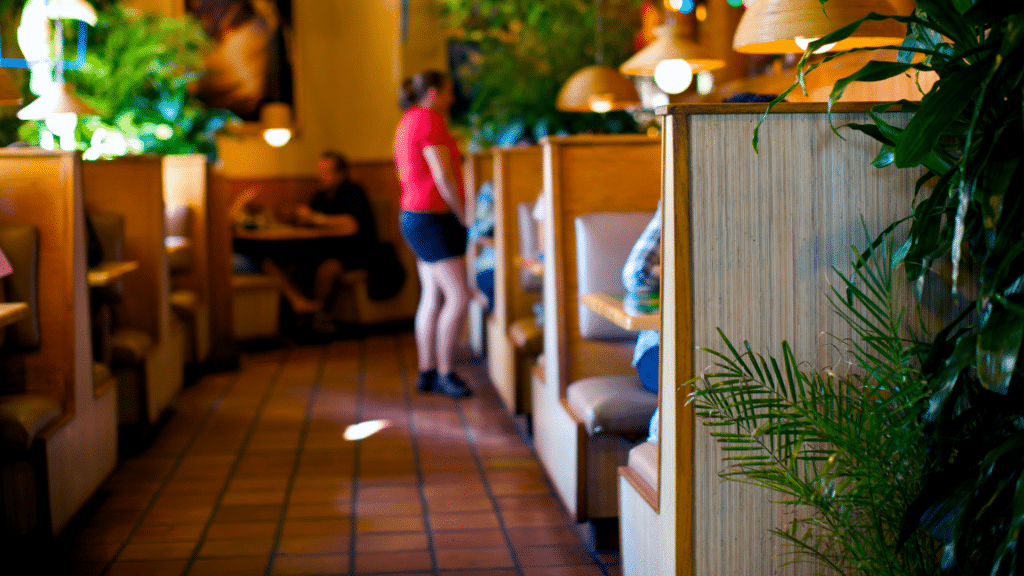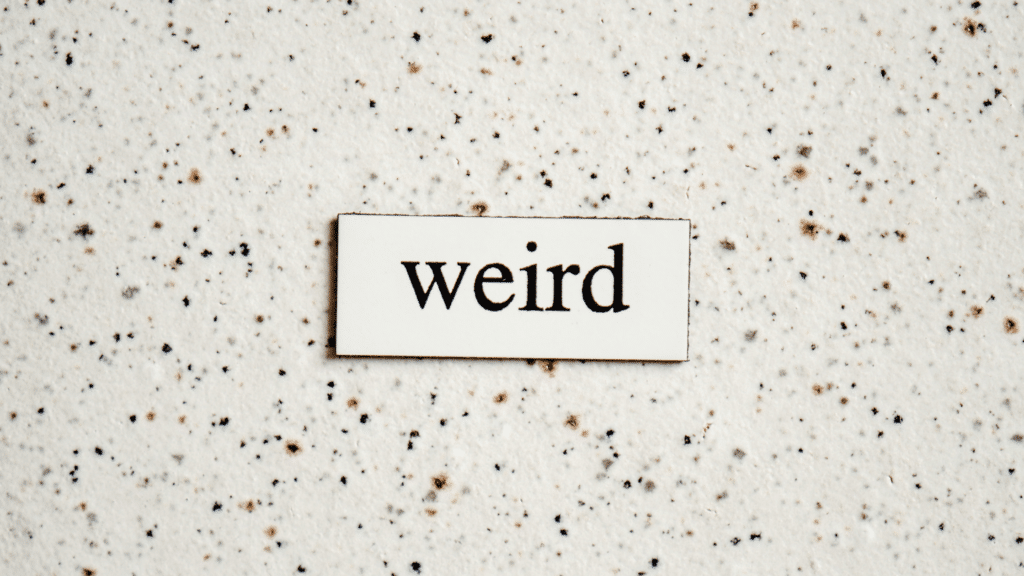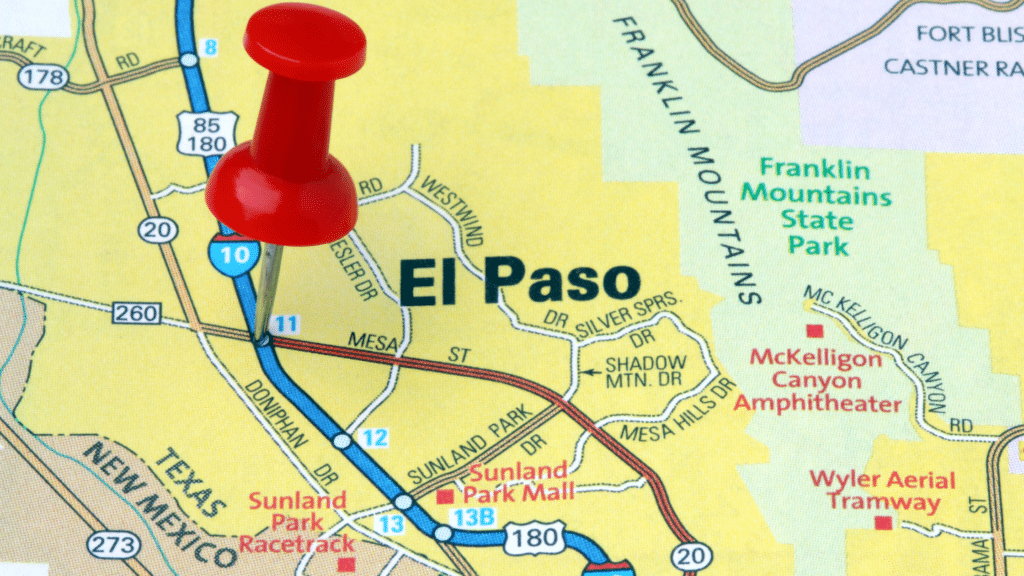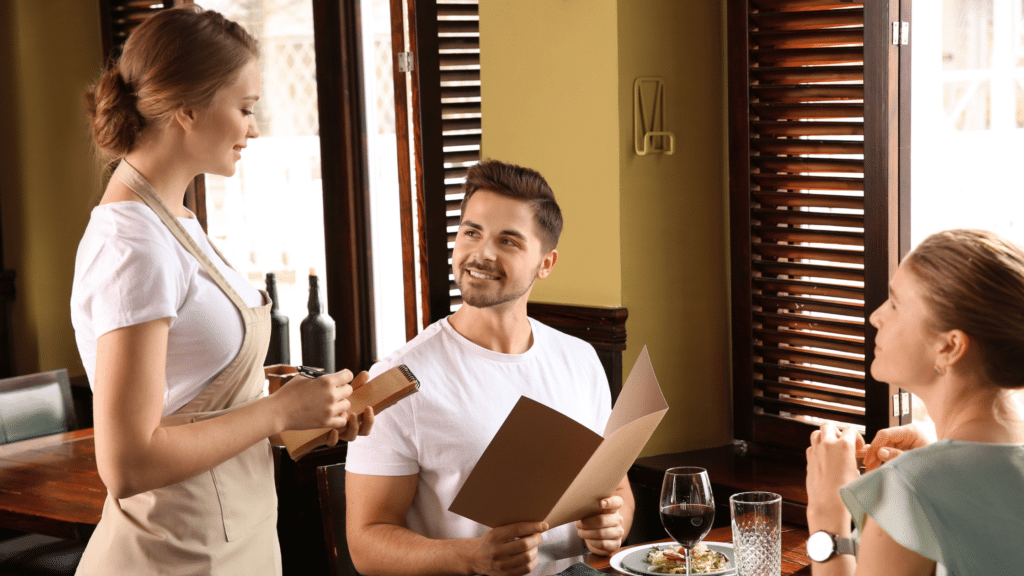
United States Culture: Restaurants
Welcome back to our series on aspects of American culture that are important to know as a newcomer to the USA. Today’s article deals with a delicious aspect of United States culture: restaurants.

1) Portion Size and “Freebies”
One particularly striking difference has to do with food and drinks. You may notice that portions at restaurants tend to be large. This is not always the case, especially not at finer restaurants (3-5 stars rating), but often a restaurant’s food service is judged in part by how much you get for the price you pay. Another aspect is that bread or a similar food (chips, naan, etc.) accompany your meal and are free, which is common at steakhouses and Mexican food restaurants.

2) Refills and Drink Sizes
Another idea related to food and drinks is that of free refills and always being served water in restaurants. Waitstaff will periodically come by your table or booth and refill your glass of (tap) water, even if it is 2/3 or more full! In some cases, it might happen frequently enough that it becomes a distraction or interruption to your conversation. This is accepted as a given among the clientele and most Americans hardly take notice of it. Also, you can often purchase a “bottomless” cup of coffee at a café or restaurant but be prepared to have your coffee refilled before you even finish it. Regarding soft drinks, there is an expectation that these come with refills in most restaurants, but not all. Some people will get a refill to go from fast food restaurants. Also, the sizes of the drink cups can be much larger than you are used to. For example, a small is typically 16-22 ounces, mediums anywhere from 20-28 oz. and larges are 32 oz. and bigger.

3) Tipping
One of the sources of misunderstanding at restaurants in the U.S. arises from the custom of tipping your waiter or waitress or if there is a tip jar and what is expected. Most travel guides will tell you that it is customary to tip 15-20% of the total bill for decent to good service. For great service, it is not unusual to see up to 25% or more for a tip. Part of the reason for this is that waiters and waitresses in the U.S. often make as little as $2/hour and usually no more than $3/hour. And if you have watched them at work, they are quite underpaid for what they do and the volume of customers they manage. For this reason, a little patience and understanding go a long way towards having a great dining experience.

It gets trickier when you have less than good service (e.g. mixed-up orders, food arrives very late, or it is not hot, etc.). Sometimes, customers do not leave a tip because they feel the service did not meet their expectations or was poor in quality. Unfortunately, it also means that if the problem was with the food itself, the waiter or waitress is penalized, though often there will be an attempt to remedy the situation by “comping” the entree (no charge) or offering free dessert or a gift card for a future visit.

What are your thoughts? Leave a comment below and stay tuned for more posts in our “Culture Spotlight” series.
Here are links to other articles in the series:
Convenience and Work Hours
Patriotism





Responses